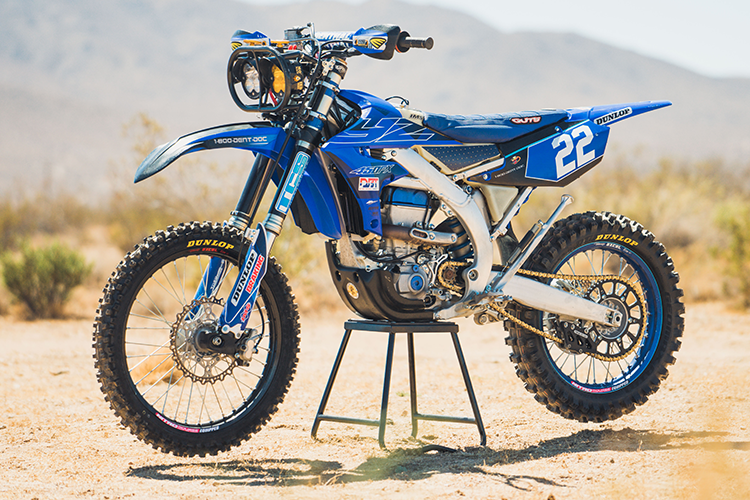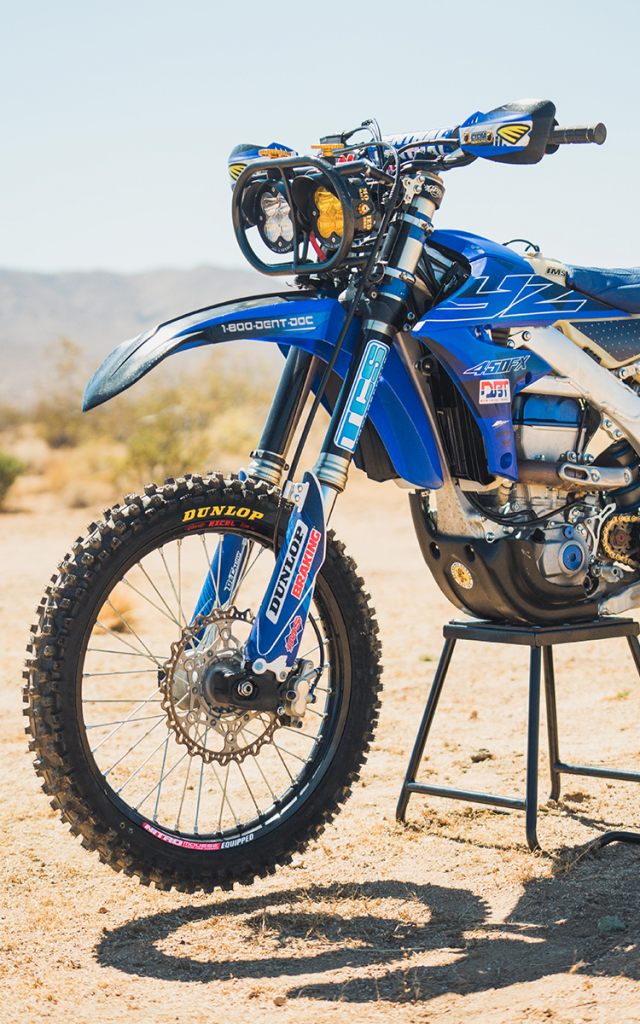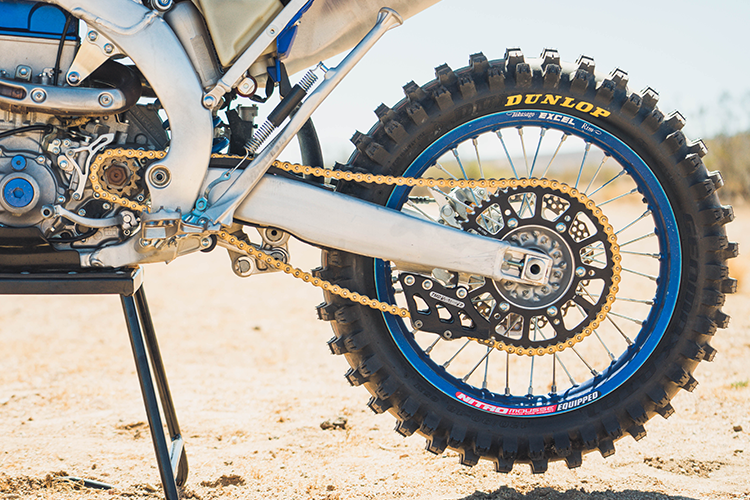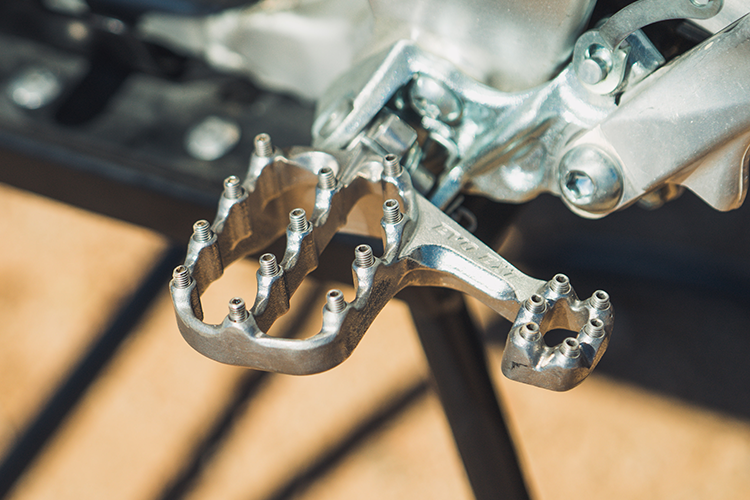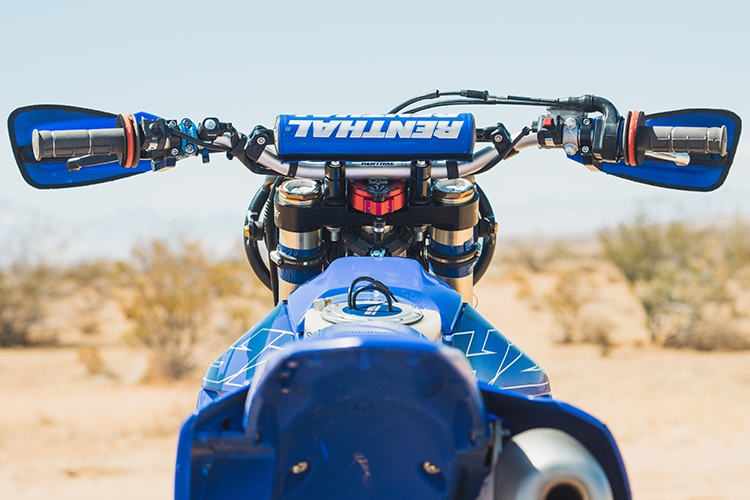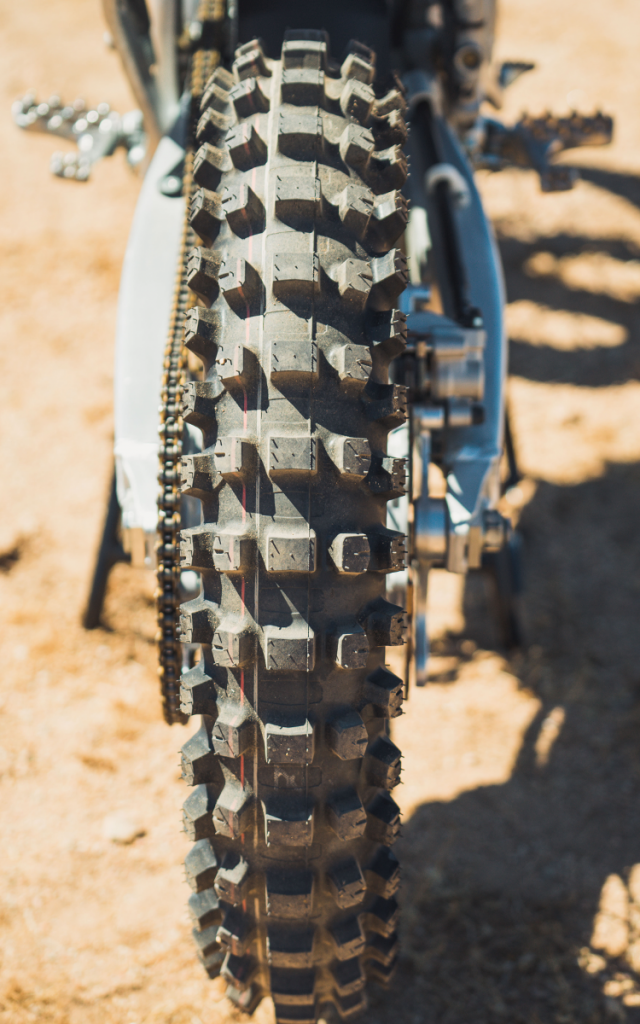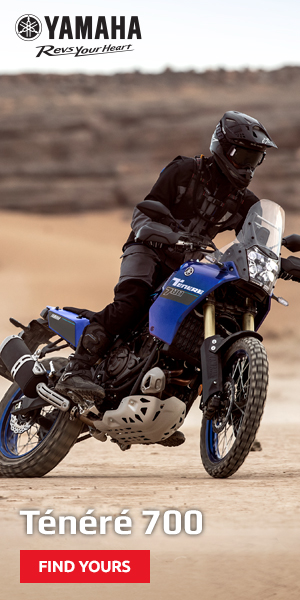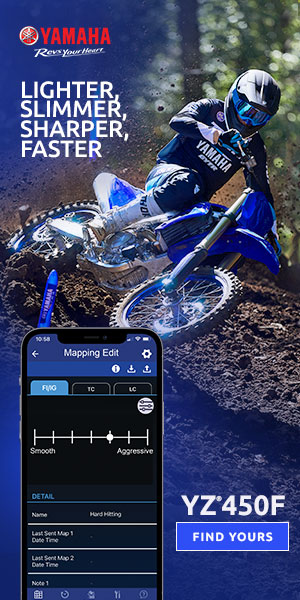Building It Better
Story & Photos by Trevor Hunter
Here at Dirt Bike Test, we don’t just throw a bunch of goodies and bling on a bike and base its performance on how a bike looks or how expensive it is to build. Instead, most parts that end up on a bike, especially long term, are on it for a reason. With our 2022 YZ450FX test unit, we’ve slowly been adding parts we think may help which led us to where we are today – phase one of our bike build.

In stock trim, the YZ450FX is very good – just like most bikes on the market these days. However, there is still some room for improvement/personalization as with any bike.
One of the best mods to this bike is in the suspension department. Yes, Yamaha has some of the best suspension off the showroom floor, but it is soft for faster riders and terrain and severely undersprung for most. Right off the bat, installing stiffer fork springs (.48-.50kg/mm) will work wonders with this bike. You can read more about this in our Top 5 Mods for this bike. Simply put, it adds a lot more comfort and performance to this fork, giving it better initial bump absorption while also helping bottoming. The stock shock is pretty good, but on the softer side for faster riders – typical for an off-road model. With some spring changes front and rear, along with some minor valving updates courtesy of TCS Powersports, the Yamaha suspension has come a long way and is more fit for our intended use and liking.
Another highly recommended mod is a taller seat. A flatter profile seat makes moving around on the bike much easier and the rider triangle is more accommodating to riders of all sizes. Adding distance from the seat to the pegs relaxes the legs and makes it easier to transition to standing. Guts Racing sent us a tall seat featuring the “RJ Wings” to test out. Most of our riders like the wings, or at the very least don’t notice them in a bad way, which is what you’d want in a product like this. The wings give you something substantial to grip with your knees and legs and relax the upper body.
Another mod we experimented with and have stuck with is a gearing change. Stock is 13/50 but we bumped up to 14/52 and have come to like it in more open conditions. The reason for going bigger on both ends was to help the chassis settle down a tad and this did the trick. It smoothed out the chassis just slightly – especially under acceleration and on small chop. Likewise, it smoothed out the power and changed how we ride the bike. Previously, first and second gear were largely unused on moto/GP/fast desert style riding. With the new gearing, it transferred our riding down a gear where 2nd is now usable in corners and we go up from there. Additionally, we can pull each gear longer and further while still having enough power and grunt to pull the larger gaps to fourth and fifth gears.
Fastway sent us their Evo EXT Footpegs to try out, and like the Guts wing seat, it goes largely unnoticed in a good way and you really only feel the extensions when you want to. The only time we’ve felt the extensions get in the way is in deep ruts on the moto track, but it is very rare that we encountered this.
We’ve tried to keep this build as minimal as possible, but after several races with no steering stabilizer, we felt we really needed one for fast west coast races. The 450FX is a lot of bike to let get out of control and we felt the added safety and comfort from a stabilizer is welcomed. We’re running GPR Stabilizer’s Pro Kit including their top triple clamp, so it only raises the handlebars 2-3mm with a submount. The kit is very clean and sleek and doesn’t upset the ergonomics while giving us the benefits of a stabilizer.
The cockpit is finished off with Renthal ⅞” handlebars in the 790 bend. The stock Yamaha bend is sort of awkward and not many of our riders like it much. The ⅞” handlebars aren’t too rigid or stiff feeling like 1-1’8” crossbar handlebars (Twinwalls) and the 790 bend is very comfortable, though bar bends are very personable.
Tires are ever changing on this ride, but Dunlop’s MX53F is what we gravitate to towards the most for SoCal riding and racing. It transfers over better to harder pack conditions rather than the MX33F, but still works quite well in soft conditions. Out back, we switch between the MX12, MX33, MX53, and AT81 depending on what we are riding. At the moment, we are running the AT81 rear tire for desert riding and racing. We stuff these with Nitromousse’s to go flat free while riding and racing.
Again, to power lights we are running a WR450F stator which is a simple plug and play option. The FX uses the MX stator which has very little capacity to power accessory lighting. The WR stator gives us about 100W to play with and can easily power our Baja Designs light setup. To accommodate the lights better, we are running a 4” longer front brake line from Core Moto. The line is long enough to extend out past the lights for a cleaner setup. Additionally, the line is steel braided and gives a better feel at the lever over the duration of use.
IMS’s 2.8 Gal tank gives us some more miles on a tank of gas and the use of a dry-break comes in handy in the longer off-road races. A Works Connection Clutch Perch boasts a smooth pull and the lever has a nice, comforting shape to it.
Overall, we haven’t gone overboard on this bike as we try to slowly improve it with practical and useful modifications. The bike is proven with several race wins already and nearly every rider that has thrown a leg over it comes away impressed. It’s easy to ride yet potent, fast, and versatile.
Do You Like DBT Bringing You Fresh Content? Search and Shop Through the Links Above or Below:
